In the unmanned car camp, Google's research and exploration should be the most in-depth and advanced. It is really difficult to make a car completely unmanned on a city road. However, unlike many people who have "tested and debugged only in experimental sites and special road conditions", Google's unmanned car Google Car has a considerable practical value. Let us take a look at the detailed workings of Google Car today and see if it depends on it.
Google Car "is not a car"
First of all, there is a need to explain: Although Google Car is a car, it is also a car function, but Google Car should be considered a robot. The research on Google Car is basically not in the field of the automotive industry, but in the field of robotics. Because of the "car" part, such as transmission, fuel use and so on. The structure of Google Car is almost the same as that of a normal manned car. The biggest difference between Google Car and a manned car is that it can independently detect the surrounding environment and react intelligently to achieve the mission of finally reaching the destination. The key to this sentence is the word "smart". By sorting out the difference, you can see that in essence, Google Car is an intelligent robot that can send you to your destination. Not just a simple car.
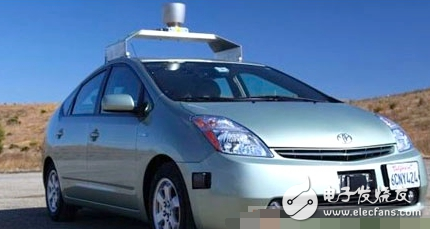
Google Car
Since it is a smart robot, Google Car will need a pair of eyes to see and a brain to think about. And these are done by the numerous precision measuring instruments and powerful processors on the car:
Velodyne 64-beam laser
The most important and expensive device on Google Car is the HDL-64E 64-line laser transmitter from the head of Velodyne Lidar. It can continuously transmit 64 laser beams with a maximum range of up to 120 meters while rotating, and receive the reflected beam, and calculate the distance between the object and the car according to the difference of return time. This creates a real-time 3D topographic map around the car. And because the beam is very dense and the refresh rate is very fast, the shape, size and approximate motion trajectory of the object can be judged after comprehensively detecting the data, which is one of the judgments for the next action. The performance of the HDL-64E is very powerful. It can provide 1.3 million sets of data per second to Google Car's processor, which ensures that the information provided to the Google Car processor is almost real-time. Of course, this also puts higher requirements on the processor. The picture below shows the world that Google Car sees under the operation of HDL-64E:
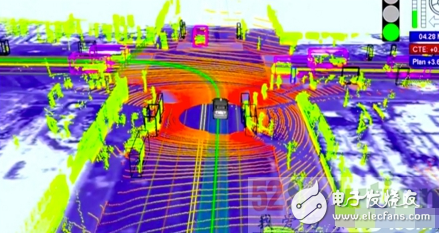
The world in Google Car’s eyes, this is the raw data that has not been processed by the processor.
Google Car will integrate the collected data with the information already in the car's built-in Google Maps to determine a fairly accurate four-week situation and lay a good foundation for response.
GPS and camera
In theory, the HDL-64E is enough to determine the position of the car. But on a complex road, the safety of both drivers and pedestrians requires multiple guarantees. So Google gave Google Car a more intuitive eye: the camera. Google Car has a pair of forward cameras with a certain distance between them. The parallax of the picture returned from the two cameras is like the two eyes of the person, which can help the vehicle to judge its position, speed of travel and other information. Google Car's tire hub also has a position sensor that detects wheel rotation and helps the vehicle to position. Then integrate with the data obtained by GPS. The array data together guarantee the accuracy of the vehicle positioning.
In addition, the camera can also identify objects such as traffic signs and signal lights on the road to ensure that their operation will strictly abide by the traffic rules. This is hard to do with laser transmitters.
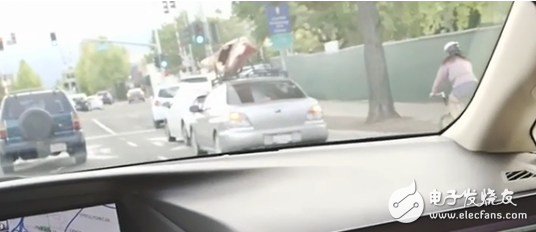
Signal lights, zebra crossings, lanes, speed limit signs... Traffic signs are everywhere, they are a guarantee of road safety.
Vehicle radar
The HDL-64E is capable of determining the trajectory and speed of an object. But the data it gets is not real-time, and
To combine it with the speed of the vehicle itself, calculate the relative speed of the two, and also need a lot of extra calculations. Therefore, Google has equipped the vehicle radar before and after the vehicle, they can accurately measure the relative speed of the front and rear vehicles and Google Car, in order to determine how the next speed changes.
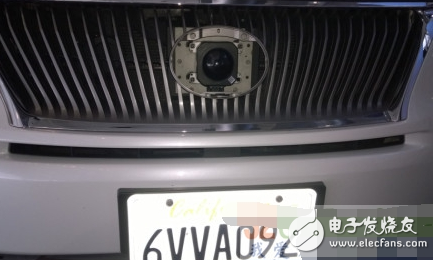
Front radar
processor
All of the above sensor data is collected and transmitted to the central processor located at the right rear of the car for processing. Since all data is real-time, the traffic is extremely large (up to 1GB per second). Therefore, the performance of Google Car's car on the computer is also very strong. The processor will refer to the data provided by each sensor and draw a final topographic map of the surrounding environment. It will mark all objects with different meanings in different colors. For example, pink represents an object that does not temporarily intersect the route of travel, and green represents an object that has blocked the route of travel, and the like. Then the program inside the car, or AI, will judge the road condition and decide the next action of the car at any time according to the road conditions.
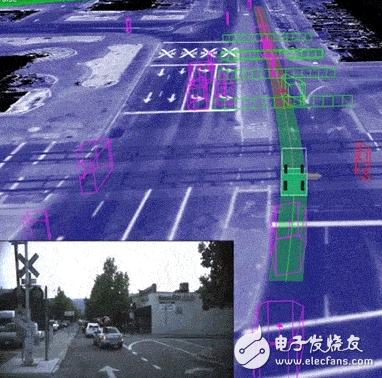
The look of the world after being processed by the car processor
Google Car's AI has a considerable degree of road intelligence, and small things like planning a destination route are not worth mentioning. Google Car can respond appropriately in the event of some temporary or unexpected events: When the lights turn green, the car begins to turn, but there are passersby walking in front of it, when Google Car will give way. Another example is that when passing an intersection without traffic lights, it will let other cars pass according to the common rules. If other vehicles do not respond, it will go forward a little before passing the intersection to indicate their own. intention.
Conclusion
Understand the many insurance measures and perfect detection and judgment mechanisms that Google has set up to protect road safety. Combined with the performance of Google Car, we have reason to believe that driverless cars will replace large-scale driving vehicles in the near future. . In fact, as early as 2012, the US Nevada Motor Vehicle Authority had awarded Google Car the license plate for the first "autopilot" car in the United States. This makes Google Car legally accessible, although the law also requires that at least two people on the car must be on the road to monitor the health of the vehicle. But this is more of a temporary restriction because of the temporary immaturity of technology. We have reason to believe that the driving ability of an in-vehicle AI that does not distract, fatigue, and can always take care of all the conditions around will eventually surpass human drivers.
LED Uunderground light,Outdoor waterproof underground lamp,Underwater Luminaires for swimming pools
Kindwin Technology (H.K.) Limited , https://www.szktlled.com